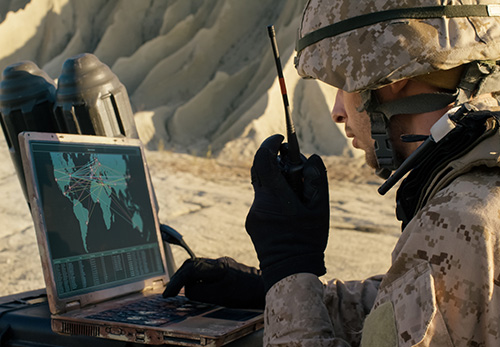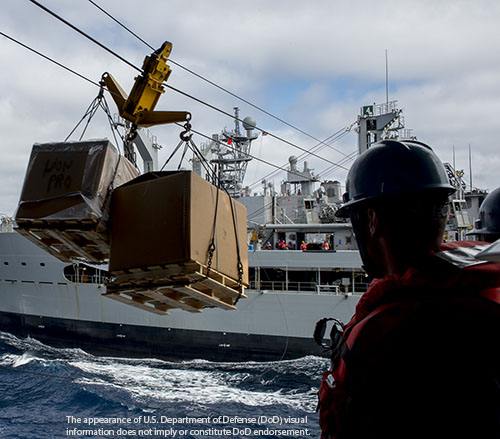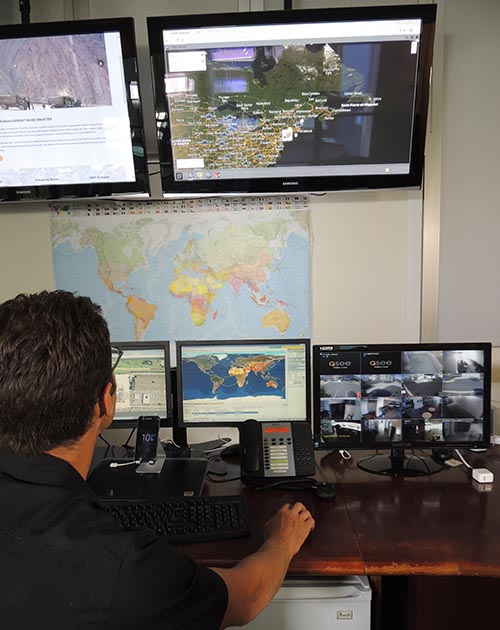As a proud sponsor of RFID in Aerospace and Defense 2017, Tapestry Solutions will demonstrate how its Enterprise Sensor Integration (ESI) platform can help reshape fragmented supply chains and communications gateways by leveraging the Internet of Things, or IoT, that can improve the readiness and mobility of military forces.

During the conference, held Dec. 13 in Arlington, Va., company representatives will demonstrate ESI’s powerful capabilities at the Tapestry booth. Tapestry’s Patrick Lubinski, Business Development Director, will also present a case study during a presentation, “Connecting Aerospace & Defense (A&D) Supply Chains with Integrated IoT Sensor Solutions.” He will highlight the rollout of ESI across 50 Boeing factories – saving the aerospace giant over $100 million in its first year alone.
Lubinski will discuss how ESI can transform fragmented A&D supply chain operations, significantly optimizing asset tracking, inventory management, warehouse and fulfillment operations, and workflow management.
ESI is a revolutionary integration platform that provides a centralized hub for any sensor, regardless of hardware type or brands, and it can be offered as an on-premise or cloud-hosted solution. This “sensor-agnostic” IoT solution provides enterprise visibility and a common operating picture. It integrates digital analytics, enabling commanders and logisticians to easily digest massive amounts of data to facilitate relevant, instant decision-making.
By bridging disparate sensor technologies through a standard interface, ESI solves military’s challenges by obtaining real-time, relevant data from multiple sensor sources and networks. ESI addresses communications gaps caused by massive data collection from disjointed systems, rapid changes in globally dispersed operations, and increasingly complex distribution and supply chain operations.
WHY MILITARIES NEED TO ADOPT IoT TECHNOLOGIES

(U.S. Navy photo by Mass Communication Specialist 3rd Class Nick Cerilli)
Unlike the consumer supply chain, the military supply chain involves an unstable and unpredictable demand, moving end supply points, and ensuring equipment readiness for war. These challenges present complications such as difficult inventory and asset management, inefficient equipment maintenance and repair operations, overstocking of spare parts, and long ship times for spares that are not immediately available in the shop.
The lack of automation also presents a challenge for defense organizations. Data collection is dependent on manual entry, and there is limited processing of massive data collection through data analytics tools. This leads to a fragmented information technology structure – a major issue facing militaries today.
The military lacks a cohesive IT architecture that can support the Internet of Things, according to the CSIS eBook “Leveraging the Internet of Things for a More Efficient and Effective Military.” The authors noted that the armed services and the Department of Defense (DoD) agencies are connected to DoD networks, but these networks are developed independently and with different requirements.
“Often, multiple services are involved in an operation, or multiple agencies are involved in a process, but information has to be passed between their stovepiped systems manually, which is inefficient and allows for human error. Fragmentation across DoD’s IT architectures complicates the development and use of common security protocols and practices across DoD network,” according to CSIS.
THE ESI APPROACH TO MILITARY CHALLENGES
 ESI ensures all IT systems are interoperable, enabling the military to leverage the full potential of the IoT. It ensures standardization across the enterprise, allowing asset management and tracking systems to talk to each other in the larger IoT ecosystem.
ESI ensures all IT systems are interoperable, enabling the military to leverage the full potential of the IoT. It ensures standardization across the enterprise, allowing asset management and tracking systems to talk to each other in the larger IoT ecosystem.
ESI automates workflow processes, and together with digital analytics, enables decision-makers to easily process the sheer volume of data, reducing data overload.
In the area of supply chain management, ESI enables logisticians to efficiently track and manage complex assets and individual supplies down to the tactical level. It allows decision-makers to see a complete picture of asset movements and inventory at any given time.
ESI collectively processes data from sensors such as RFID position-information tags; passive and active GPS-enabled WiFi tags; and embedded hardware and complex servers, both legacy and next-generation systems.
As noted by CSIS, IoT technology can significantly reduce costs in the following areas:
- Inventory Management – Real-time supply chain visibility and predictive analytics enable the military to order parts and supplies on demand, and reduce stockpiling and loss.
- Real-Time Fleet Management – Adopting IoT devices for real-time fleet management, including sensors for cargo, geolocation, status, fuel efficiency and weight; can reduce fuel costs by as much as 25 percent and increase fleet utilization by two percent.
- Condition-Based Maintenance — Retrofitting vehicle fleet with onboard sensors to monitor engine performance and parts facilitates on-demand ordering of parts, which in turn, reduces unanticipated failures.
- Base Management and Energy Efficiency – Smart thermostats have saved consumers up to 15 percent on heating and cooling. Even half those efficiency gains could save the DoD $700 million per year on energy.
Tapestry Solutions, Inc. is a global provider of information management software and services for defense, government and commercial markets. Backed by our parent company, The Boeing Company, we provide mission planning, training and simulation support to maximize readiness for our warfighters. We also help solve logistics challenges for the world’s largest and most complex supply chains. Headquartered in San Diego, Calif., Tapestry supports customers from more than 50 locations worldwide, including Saudi Arabia, Oman, Afghanistan, Kuwait, the UK, South Korea, Australia, Germany and Italy.